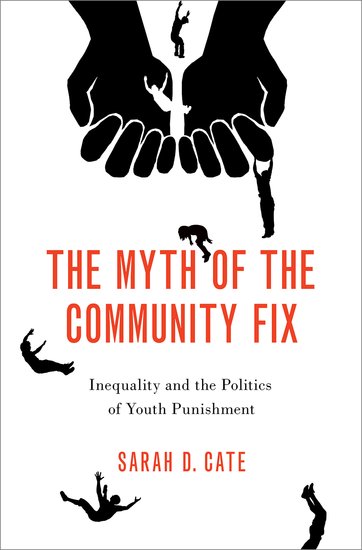From 2007 to 2018, legislators in California approved the spending of approximately $1 billion to implement new alternatives to incarceration. California has not been alone. As the extent of the U.S. mass incarceration crisis has come into sharper view, politicians, activists, and nonprofit foundations from across the political spectrum are turning their attention to prison reform. These actors are motivated by a variety of goals, such as reducing gaping racial disparities in incarceration rates, ending abusive conditions of confinement, repealing the most punitive policies driven by the “super predator” panic in the 1990s, and cutting public expenditures. For example, the reforms in California were intended to ameliorate the conditions of the state-run prison system, which was under a court order to end abusive conditions of confinement, notably the excessive use of pepper spray and solitary confinement.
While the intentions of such changes might be admirable, California’s strategies to achieve them fall under a broader trend of reform that has taken hold across the country, particularly in the juvenile justice system: the “community-based reform movement.” The term “community-based” is tricky, and perhaps intentionally deceptive. The “community” in “community-based” bears little connection to the plain sense of the word. The use of the word “community” is clearly aimed at invoking legitimacy by suggesting that the reforms originate from, reflect the demands of, and will be carried out by the people who are most impacted. But this implied connection with “community” is a political sleight of hand from the community-based reform movement. Rather, so-called community-based reform has largely been promoted by large foundations and is premised on reducing the number of youth sent to state-run prisons by instead devolving control to county facilities and probation departments.
The stated goals of community-based reformists are to expand programs at the local level (such as training in life skills and anger management, intensive supervision probation, electronic monitoring, risk assessments, and drug treatment), often through public–private partnerships, that address the individual behavioral needs of youth caught up in the juvenile system. States that have pursued community-based reform have received tremendous bipartisan praise. However, the reality on the ground is that the reforms simply move the problems of punitive youth incarceration to the county level rather than resolve them.
Moreover, the reforms expand individualized interventions that continue to stigmatize the “juvenile offender” as a broken, immoral subject in need of personal transformation, which contributes to continued punitiveness in the system. So-called community-based reforms, as part of the broader shift away from the centralized provision of public goods in the United States, are allied with a set of norms and concepts that reproduce a punitive approach to carceral practices.
As I show in my book The Myth of the Community Fix, those committed to addressing the problems of mass incarceration should be wary of the community fix. The reality is that reversing the tide of mass incarceration will require not privatization, but rather a significant restructuring of the state.
The massive nonprofit MacArthur Foundation (best known for its “genius” grants) has succeeded at having its version of community-based reform adopted in at least 38 states. Another large nonprofit, the Annie E. Casey Foundation, has spread its model to more than 300 local jurisdictions in over 39 states.
It is helpful to review how community-based reform has played out in the three states that have led in its adoption: Texas, California, and Pennsylvania. All three states deemed that the community-based model offered the most cost-effective approach to solving high rates of youth confinement, high costs of running prisons, and abusive conditions within state-run prisons. A careful analysis of the results, however, illustrates that there are significant negative consequences to this turn toward “community.” In practice, turning over control to the “community” has really meant devolving control to county probation departments that then reproduce and expand punitive confinement. The grants that accompany such devolution largely go to investments in local prisons and punitive forms of probation.
This was the case in California, where counties used most of the money for traditional secure confinement. In both 2016 and 2018, detention and probation costs absorbed about 80 percent of total grant funding, while drug treatment and counseling totaled a mere 2 percent of the total grant funding.
More from our decarceral brainstorm
Every week, Inquest aims to bring you insights from people thinking through and working for a world without mass incarceration.
Sign up for our newsletter for the latest.
Newsletter
Similarly, community-based reform grant money in Texas has largely flowed to traditional forms of confinement at the local level. The year that landmark state legislation passed to open 600 new “community-based” secure beds, $35 million in grant funding went to paying for those. In the years following the passage of the reform legislation, the number of prison cells in Texas grew because of expanding lockups at the county level. These findings suggest that the “community-based” movement provides little hope for those interested in reducing the number of youth subjected to a punitive juvenile justice system.
Advocates of community-based reform might still point out that the approach has helped to significantly reduce the number of youth sent to abusive state lockups. This misses that, for the many more young people now held in county lockups, these exact same abusive conditions persist. Local prisons are beset by similar issues of abusive conditions of confinement that have long plagued state-run prisons.
Just one year after the community-based reform legislation passed in California, Los Angeles County entered an agreement with the United States Department of Justice to remedy the unconstitutional conditions of its “community-based” probation camps, citing issues such as physical abuse, inadequate staffing, and the excessive use of pepper spray. The Los Angeles County Probation Department operates 19 detention camps housing approximately 2,200 youth—about the same size as the entire state-run juvenile prison system at the time.
The turn to “community” also exacerbates neoliberal rhetoric that individuals must take responsibility for solving vast social problems that originate at the level of political economy. For example, the Annie E. Casey Foundation states that “lasting changes can only result from internal choices made by the young people themselves.” These interventions continue a long tradition of aiming to “fix” juveniles rather than the society they inhabit.
A major objective of the movement is to expand individual behavioral treatment programs. In all three model states, individual uplift programs have proliferated, as have private contracts to provide the programs. The focus on individual behavioral solutions keeps the focus on the perceived deficient psychology, morality, and skills of young people rather than on agitating for downwardly redistributive policies that could reduce or eliminate inequalities.
This focus on individual behavioral interventions is conducive to punitive approaches to delinquency. Community-based reforms don’t fully repudiate punitive policies, but rather want to make sure that punitive policies are not “overused,” or used against the “wrong kind” of youth. This belief that it is possible to sort youth—into categories of those who deserve or don’t deserve punishment—reinforces rather than eliminates harmful punitive practices such as lengthy juvenile sentences (including life without parole), draconian sex offender laws, solitary confinement, and gang-related sentencing enhancements.
In Texas the state juvenile justice system has expanded its use of solitary confinement following the adoption of community-based reforms. This is ostensibly to preempt uprisings by those it identifies as “really bad kids,” those left in state-run prisons after reforms removed many young people from these institutions. In response to criticism, the Texas Juvenile Justice Department’s executive director stated, “without order and security and safety, you can’t have rehabilitation and education.”
Community-based reform is largely focused on front-end behavioral intervention policies geared at reducing the number of youth who will become “delinquent” in the first place. However, once a young person becomes a “delinquent,” a continued commitment to punitive discipline persists. In fact, punitive policies are legitimized by the perception that these youth were given a chance to change their behavior and willfully chose not to.
The logic of individual treatment also contributes to greater punitiveness by diverting attention away from socioeconomic causes of behavior and the rise of punitive policies. Individual behavioral programs cannot compensate for extreme economic inequality, dramatic reductions in social generosity, and decades of increasingly punitive public policy. Instead, these programs perpetuate the notion that young people—through correct and moral behavior—can somehow overcome these structural realities and avoid punitive policies that are viewed as necessary should they fail to conform to expected patterns of behavior.
How is it possible that the most popular and widespread model of reform in the juvenile justice system has such negative outcomes?
Context matters. The rise of mass incarceration was the consequence of major changes in the political and economic arrangements of the United States, including the gutting of public goods and the neoliberal individualizing of blame for subsequent social ills. Community-based reform is a creature of these larger political developments.
For the past fifty years, the United States has experienced a bipartisan attack on the welfare state, resulting in less social generosity and intensified inequality. The New Deal was the high-water mark of establishing policies organized around the concept of collective economic security. In subsequent decades this core ideal has been greatly contested and there has been a steady weakening of the faith in centralized governmental power to address social problems. The ascendant position of the capitalist class after World War II facilitated an unprecedented attack on the New Deal coalition, particularly the labor movement, the welfare state, and public goods. By the end of the 1970s, both political parties shifted toward support for tax cuts, deregulation of industry, and rolling back the welfare state. A defining feature of this emerging “neoliberal order”—highlighted by President Ronald Reagan’s attack on unions, President Bill Clinton “ending welfare as we know it,” the destruction of public housing, and the financialization of the economy—was that the cuts to public budgets were paired with punitive policies to suppress and contain those marginalized by these new economic arrangements.
The ideological grease to these major shifts in the U.S. economy and U.S. politics was the powerful tool of individual blame. As governmental solutions and programs were intensely stigmatized, individual uplift became the go-to answer to a host of social ills. Cuts to social welfare programs during these decades were justified by blaming the cultural and moral inadequacies of people for their poverty and for their involvement in the criminal legal system. As a result, with reduced calls for the government to provide greater equality and security through public-sector investments, public policy shifted toward punitive and repressive solutions, resulting in the rise of mass incarceration.
Today, community-based reforms to the juvenile system double down on commitments to eliminate public goods and invoke individual blame. This reform model promotes partnering with the private sector to carry out the functions of the juvenile system, and heavily emphasizes individual behavioral interventions to reduce delinquency—all while boasting major cost savings to local and state governments.
Thus it celebrates the degree to which it removes government responsibility to provide public-sector investments. So doing, it ties prison reforms to the longstanding commitment to austerity. The reform model appeals to actors across the political spectrum because it ostensibly repudiates the most punitive approaches to the system. It does so in part by drawing on the positive associations people have with “community,” thus muting demands on the government—and particularly on economic elites—to substantially reorganize our political system away from arrangements that benefit those at the very top. Despite broad bipartisan popularity, the promises of the reform model fall well short of improving the treatment of young people caught up in the juvenile system because they uphold the status quo economic and social arrangements.
It may seem odd or contradictory to make an argument against reforms that turn away from the government and pursue “community” solutions, since it was the government (in the form of public policy choices) that drove the rise of mass incarceration. Indeed, as many scholars and activists understand, the phenomenon of mass incarceration was not devised by the private sector but instead was rooted in decisions about what the role of the state should be and how it should allocate public expenditures. Since the 1980s, policymakers have slashed the social safety net while expanding public expenditures on the punitive dragnet. Understandably, the choices to shrink the welfare state and expand prisons have sowed great distrust and strong anti-statist sentiments.
However, the broad application of an anti-statist approach in juvenile system reforms is shortsighted and flawed. While private interests did not play a significant role in the rise of mass incarceration, they have become a significant obstacle to meaningful reform. An effective reform movement will have to push for better nonpunitive public programs in a landscape now beset with private providers whose bottom line is opposed to carceral retraction. A significant repurposing of the state occurred in order for the carceral state to become what it is today, so a new repurposing of the role of the state and public policy will need to happen again to reverse it—not, as the community-based reform movement would suggest, the further abandonment of the state in favor of individual, county-level solutions rooted in the private sector.
Decarceration cannot be productively disconnected from the fight for the universal provision of basic needs such as housing, health care, jobs, and education. A different path from the foundation-led reform movement is needed, one that builds up expectations for the government to provide solutions through durable public-sector investments instead of leaving the burden on individuals and misleading notions of “community.” Instead of trying to fix youth and equip them to survive the challenges of existing social and economic relations, we should concern ourselves with fighting for a more just and equitable world for them to inhabit.
Image: Lucas Hoang/Unsplash


